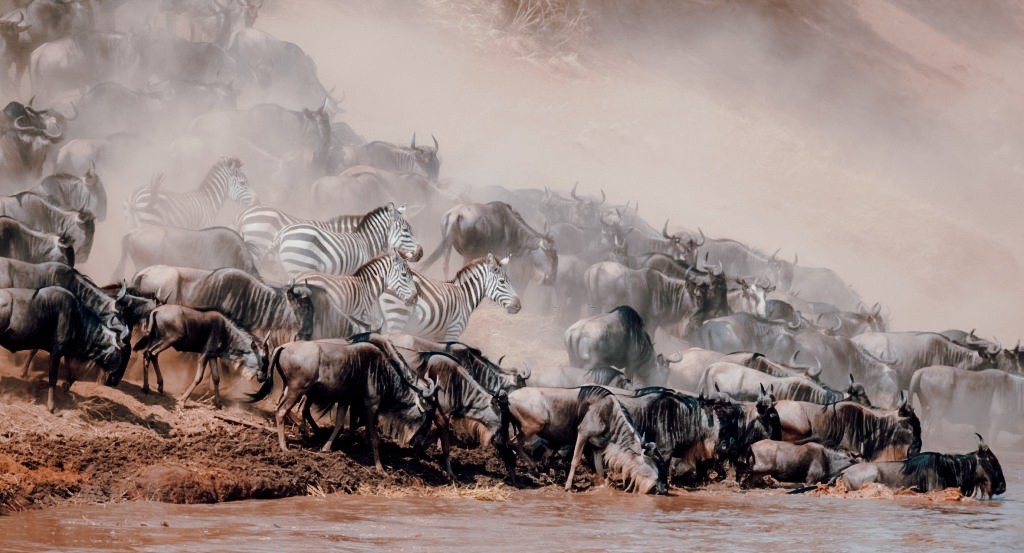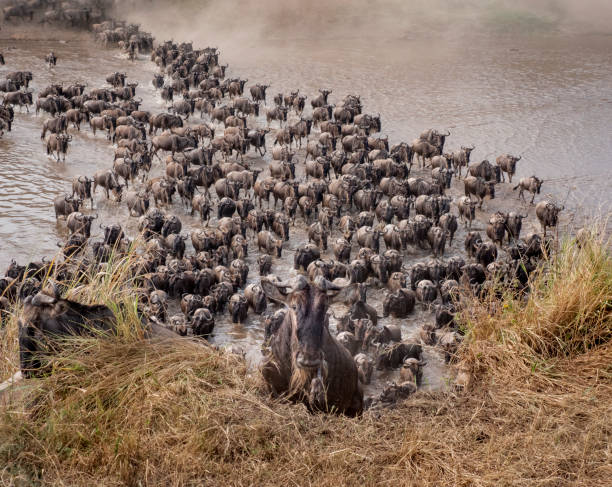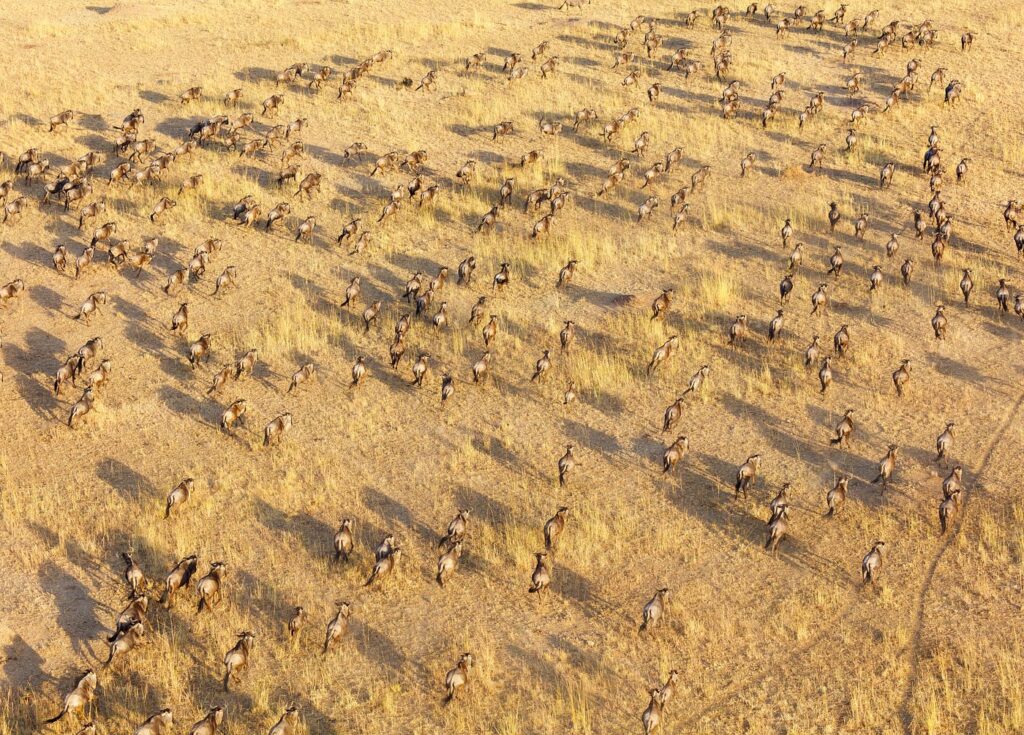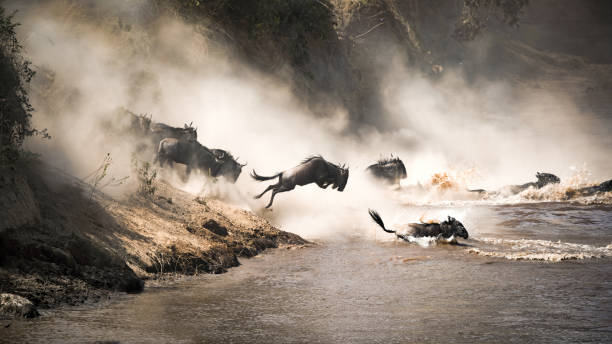The sun rises on the Serengeti plains, and the ancient music of nature begins to stir, signaling the beginning of one of nature’s most spectacular events: the Great Wildebeest Migration.
This spectacular phenomenon, which is sometimes referred to as the 8th Wonder of the World, will take place once again in 2024 and will draw thousands of nature lovers from all over the world.
Every year, an astounding 2 million wildebeests, which are accompanied by an ensemble of zebras, impalas, elands, and gazelles, embark on an astonishing journey that covers over 3,000 miles from the Serengeti National Park in Tanzania to the Maasai Mara National Reserve in Kenya.
This is indeed a giant movement in life, a clear sign of the resilience and instinctive power of these amazing creatures.
The Migration Cycle

The precise time of the Great Wildebeest Migration is determined by the intricate connection that exists between the region’s climate and nature, thus creating a unique spectacle that cannot be predicted accurately.
The intricate relationship between rainfall, vegetation, and temperature is the one that sets the exact movements of the massive herds, bringing a sense of wonder and excitement to this natural event.
The Journey Begins: Mid-June in the Central Serengeti
By early June, the rainy season is over, and the central Serengeti turns into a vibrant green oasis that entices the wildebeest to congregate and feed on the fresh grass that covers the landscape.
It is during the first days that people fortunate enough to observe the migration will experience the early stages of the migration with the palpable feeling of expectation and restlessness among the wildebeest.
Daring River Crossings: The Grumeti River in Early July

The first half of July is when the migration takes a dramatic turn and the herds approach the Grumeti River.
This phase is characterized by a courageous river crossing, which makes the journey even more spectacular and thrilling.
Crocodiles hide in the river’s depths, and the wildebeests have to deal with the strong currents.
It’s a moment of high tension and fascinating scenes, demonstrating the bravery and the natural instinct of the migrating animals.
The Northern Serengeti Beckons
As of mid-July, the herds commence their northward journey passing into the Northern Serengeti.
This part of the Serengeti is well known for its vast land and dense wildlife, permitting tourists to see another side of the Serengeti’s beauty.
The migration will then move upstream and new opportunities for crossing the river and engaging with the wildlife will be waiting.
The Epic Mara River Crossings: August in the Maasai Mara

August is the time of the year when the most famous Mara River crossings are happening and the Great Migration of the wildebeest reaches its peak in the Maasai Mara National Reserve, Kenya.
The Mara River is a testing ground for millions of wildebeests who, in turn, become the prey of crocodiles, lions, cheetahs, and hyenas that capitalize on the abundance of the moment.
This fantastical event is a demonstration of the natural balance between prey and predator, which enchants the spectators and the photographers alike.
In August, the whole world’s attention turns to the Mara Plain, the place of one of the most striking wildlife displays on the planet, a real celebration of the force and strength of nature.
The Return Journey: September to October

With the onset of September, the wildebeest herds that have depleted the resources in the northern regions head back southward.
Once again, the vast expanses of the Serengeti play host to the immense movement of animals and provide a clear example of the cyclical nature of the Great Migration.
The coming herds bring freshness and vitality to the regions they journey through, leaving the trails behind full of new vegetation.
October is the time when the movement becomes less active as the herds, which are now scattered across different parts of the Serengeti, graze more sedentarily.
The initially tightly-knit groups begin to disperse, enabling the eventual conclusion of the journey in preparation for the rains of November.
Mark Your Calendars for the 2024 Spectacle
With the 2024 Wildebeest Migration fast approaching, nature explorers, researchers, and travelers of all kinds will be treated to a spectacle unlike any other.
This spectacular event, which humankind was mesmerized for centuries will again amaze us with breathtaking scenes and memories that will stay with us all our life.
Whether you’re a safari enthusiast or a newbie, the Great Wildebeest Migration of 2024 is an adventure to be remembered. Get your calendars out, make your bookings, and get ready to be carried away by the sheer force and power of one of nature’s greatest shows.





